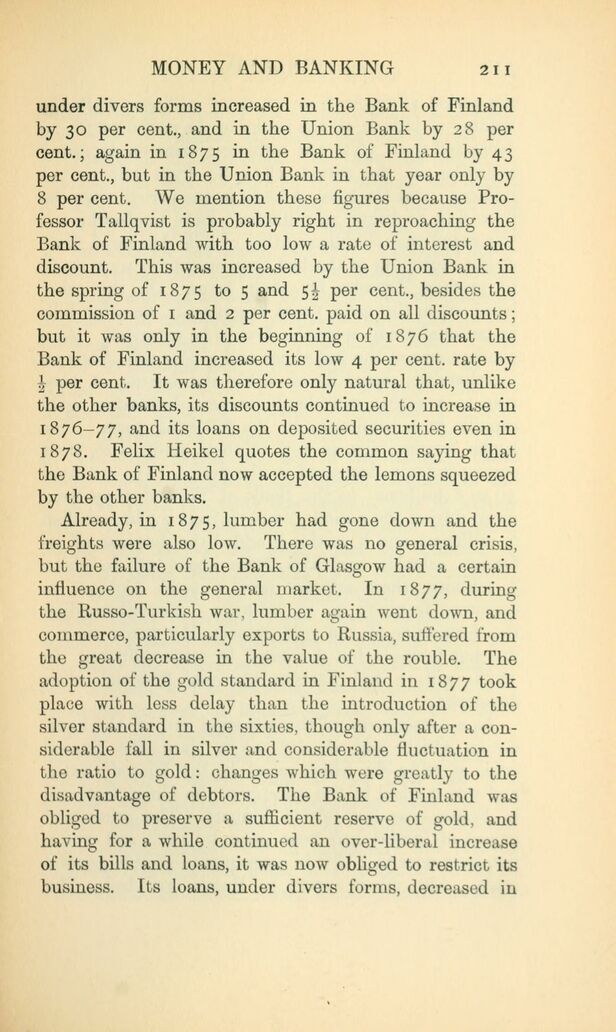
Full resolution (JPEG) - On this page / på denna sida - VIII. Money and Banking

<< prev. page << föreg. sida << >> nästa sida >> next page >>
Below is the raw OCR text
from the above scanned image.
Do you see an error? Proofread the page now!
Här nedan syns maskintolkade texten från faksimilbilden ovan.
Ser du något fel? Korrekturläs sidan nu!
This page has been proofread at least once.
(diff)
(history)
Denna sida har korrekturlästs minst en gång.
(skillnad)
(historik)
under divers forms increased in the Bank of Finland
by 30 per cent., and in the Union Bank by 28 per
cent.; again in 1875 in the Bank of Finland by 43
per cent., but in the Union Bank in that year only by
8 per cent. We mention these figures because Professor
Tallqvist is probably right in reproaching the
Bank of Finland with too low a rate of interest and
discount. This was increased by the Union Bank in
the spring of 1875 to 5 and 5½ per cent., besides the
commission of 1 and 2 per cent, paid on all discounts;
but it was only in the beginning of 1876 that the
Bank of Finland increased its low 4 per cent. rate by
½ per cent. It was therefore only natural that, unlike
the other banks, its discounts continued to increase in
1876-77, and its loans on deposited securities even in
1878. Felix Heikel quotes the common saying that
the Bank of Finland now accepted the lemons squeezed
by the other banks.
Already, in 1875, lumber had gone down and the
freights were also low. There was no general crisis,
but the failure of the Bank of Glasgow had a certain
influence on the general market. In 1877, during
the Russo-Turkish war, lumber again went down, and
commerce, particularly exports to Russia, suffered from
the great decrease in the value of the rouble. The
adoption of the gold standard in Finland in 1877 took
place with less delay than the introduction of the
silver standard in the sixties, though only after a
considerable fall in silver and considerable fluctuation in
the ratio to gold: changes which were greatly to the
disadvantage of debtors. The Bank of Finland was
obliged to preserve a sufficient reserve of gold, and
having for a while continued an over-liberal increase
of its bills and loans, it was now obliged to restrict its
business. Its loans, under divers forms, decreased in
<< prev. page << föreg. sida << >> nästa sida >> next page >>